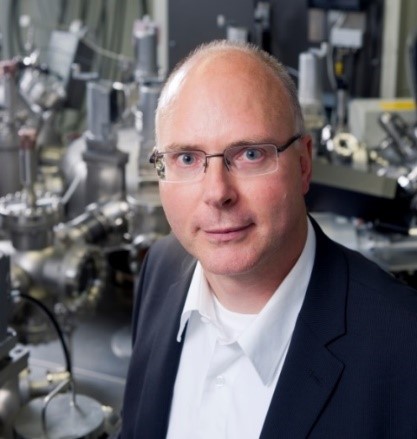3-1、High-throughput approaches in Corrosion Research by Scanning Flow Cell and Scanning Kelvin Probe
Michael Rohwerder
Max-Planck-Institut für Eisenforschung, Düsseldorf, Germany
摘要:Scanning Kelvin Probe microscopies and Scanning Flow Cell coupled with direct online spectroscopy are powerful techniques with high spatial resolution and sensitivity that provide deep fundamental insight in corrosion processes as well as unique possibilities for high-throughput analysis and screening.
While the Scanning Flow Cell is obviously an electrochemical technique, as it features the classical three electrode set-up, the Scanning Kelvin Probe techniques are often not seen as intrinsic electrochemical techniques. Hence, in the first part of this presentation both techniques will be introduced and examples for their great application portfolio will be given.
In the second part examples of how these techniques can be used for high throughput experiments will be shown. Of great potential here are gradient materials e.g. prepared by simultaneous evaporation by PVD from different pure materials. Each point of the sample has then a certain composition which can be investigated by these high resolution techniques.
Examples will cover a wide field from novel Zn-alloy coatings on steel to noble metal catalysts for hydrogen fuel cells.
DOI:10.12110/secondfmge.20181014.301

Since 2000 Dr. Rohwerder is head of research group at the Max-Planck-Institut für Eisenforschung GmbH (MPIE) in Düsseldorf, Germany. He studied physics at the University of Hamburg, where he received his diploma in 1992. He finished his dissertation in 1997 at the University of Düsseldorf. After about one year of postdoctoral research at the University of Texas at Austin, in the electrochemistry lab of Prof. A.J. Bard, he accepted a position as senior researcher at the University of Erlangen at the Chair for Corrosion and Surface Engineering (Prof. M. Stratmann), where he built up a lab for high temperature research. At the MPIE he is responsible for the corrosion related research of the institute, covering a wide range from novel zinc alloy coatings, self-healing organic coatings, hydrogen in metals to high-temperature grain boundary oxidation.
In 2008 he was awarded a Laboratory form the Christian Doppler Society (CDL for Diffusion and Segregation, 2008-2014) and 2014 he received a call as Full Professor at Ohio State University (Department of Materials Science and Engineering), but stayed at MPIE after receiving a counter offer.
Also since 2014 he is in charge of the scientific coordination and administrative supervision of the Department of “Interface Chemistry and Surface Engineering” at the MPIE (Prof. M. Stratmann, currently on leave as the president of the Max Planck Society).
The following subjects are being actively researched in 2018: electrochemically driven delamination; structure-reactivity correlation for reactions at buried interfaces; nano-particles and nano-capsules for smart coatings; self-healing mechanisms; conducting polymers and alternative materials for intelligent release; initial stages of oxidation and corrosion; grain boundary oxidation; electronic properties of oxides; surface modification for improved mechanical and chemical stability of composite materials; hydrogen detection in and uptake into metals and hydrogen embrittlement; novel applications of Kelvin probe techniques; electrochemistry at “dry” surfaces and buried interfaces, extending this also to very fundamental electrochemistry and for fast through-put characterization; Scanning Flow Cell (SFC) for corrosion studies.